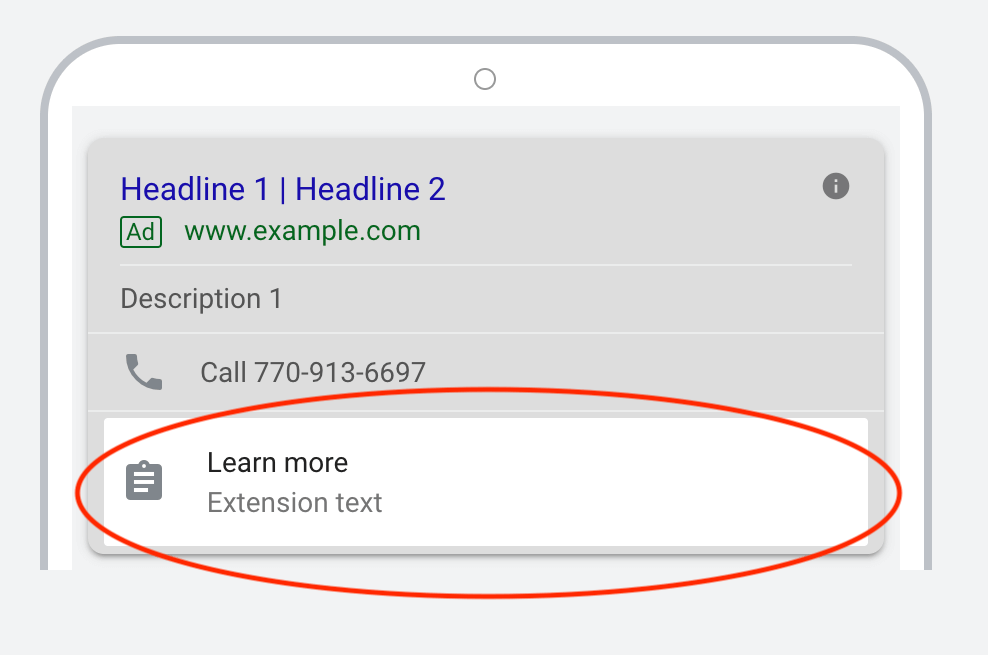Online consumers are often hesitant to give out their information, particularly if doing so adds effort to the search process. Even if they notice a relevant ad that generates interest, getting a them to access a separate website, locate a contact form, and fill out their information may create a significant-enough obstacle to prevent that prospect from making contact with the business.
Google Ads has recently introduced a powerful new tool into the SERP ecosystem designed to overcome consumer inertia and capture new leads. It’s called the Google Ads lead form extension, and it works by surfacing contact forms directly into search ads and pre-populating them with the user’s contact information automatically.
Moving forward, advertisers will now be able to use this extension to add a call-to-action button to the bottom of their search ads, and when users click the button, they’re taken to a form which has been pre-populated with the user’s contact information from their Google account. All the user has to do is click “submit.”
While useful, the tool isn’t perfect. There are some gaps in reporting and data storage that can cause headaches for marketers. To get the most out of the Google Ads lead form extension, CallRail users should pair it with the new features we’ve added to our existing Google Ads integration designed to solve those issues.
How do Google Ads lead form extensions work?
After a few months in beta, lead form extensions are available to most advertisers as of December, 2019, and can be added to all the ads in a campaign or to individual ads, including existing ads.
Once you turn on the extension, the ad will display a button at the bottom with a call-to-action.
As of the publishing of this post, you get to choose from a list of present call-to-action copy options to display on the button.
Calls-to-action include:
- Learn more
- Get quote
- Apply now
- Sign up
- Contact us
- Subscribe
- Download
- Book now
- Get offer
You can also include up to 30 characters of description text to show in the Google Ad.

Once users click through, they’re brought to the form itself. Each form has a headline, business name, and 300-character description field, as well as a URL call-to-action and 200 character submission message once the form is submitted. You have to option to capture the user’s Name, Email, Phone Number, and Postal Code as the pre-populated information gathered from their Google Account.

Google Ads records it as a click whenever someone clicks on a lead form extensions call-to-action button, and counts each submission as a conversion.
Integrating Google Ads lead form extensions with CallRail
While Google Ads lead form extensions provide an efficient new way to capture leads directly from search ads, it’s not a perfect solution. Certain gaps exist that could end up as headaches for marketers down the road.
A few issues include:
- Data from lead form extensions can only be captured via a manual CSV download or by setting up a complicated webhook integration.
- Lead data is only stored in Google for 30 days.
- Attribution data for leads captured via lead form extensions can only be reported on inside of Google Ads, causing advertisers to miss the valuable data that comes from viewing multi-touch and multi-channel lead attribution more holistically in a single platform.
We love this new tool at CallRail, so we’ve developed new features for our popular Google Ads integration to help advertisers fill in the gaps and get the most from this new type of extension.
CallRail’s Google Ads integration allows advertisers to automatically pull in the leads captured by lead form extensions into CallRail with their existing Google Ads integration. You can now view lead form data from Google Ads alongside call data, and store full contact information indefinitely without complicated, homegrown webhook setups.
Our Google Ads integration users benefit from:
Simple setup for actionable lead data capture. Instantly make your data actionable with automatic transfer into CallRail. Use our real-time lead alerts to know when you’ve received a form lead from your Google Ads, and follow-up quickly.
Full, multi-channel attribution data for all lead types. View leads from your Google Ads lead form extensions alongside leads from calls, forms on your website or landing pages, and all marketing channels. Understand how your leads convert into paying customers with conversation capture, and a view of the full multi-touch buyer’s journey.
Store lead data indefinitely. Contact information, including names, emails, and phone numbers are stored inside of CallRail for the lifetime of your account. Never miss out on a valuable lead again.
Learn how to setup and integrate your Google Ads lead form extension through CallRail now.
The post Integrating Google Ads lead form extensions with CallRail appeared first on CallRail.

